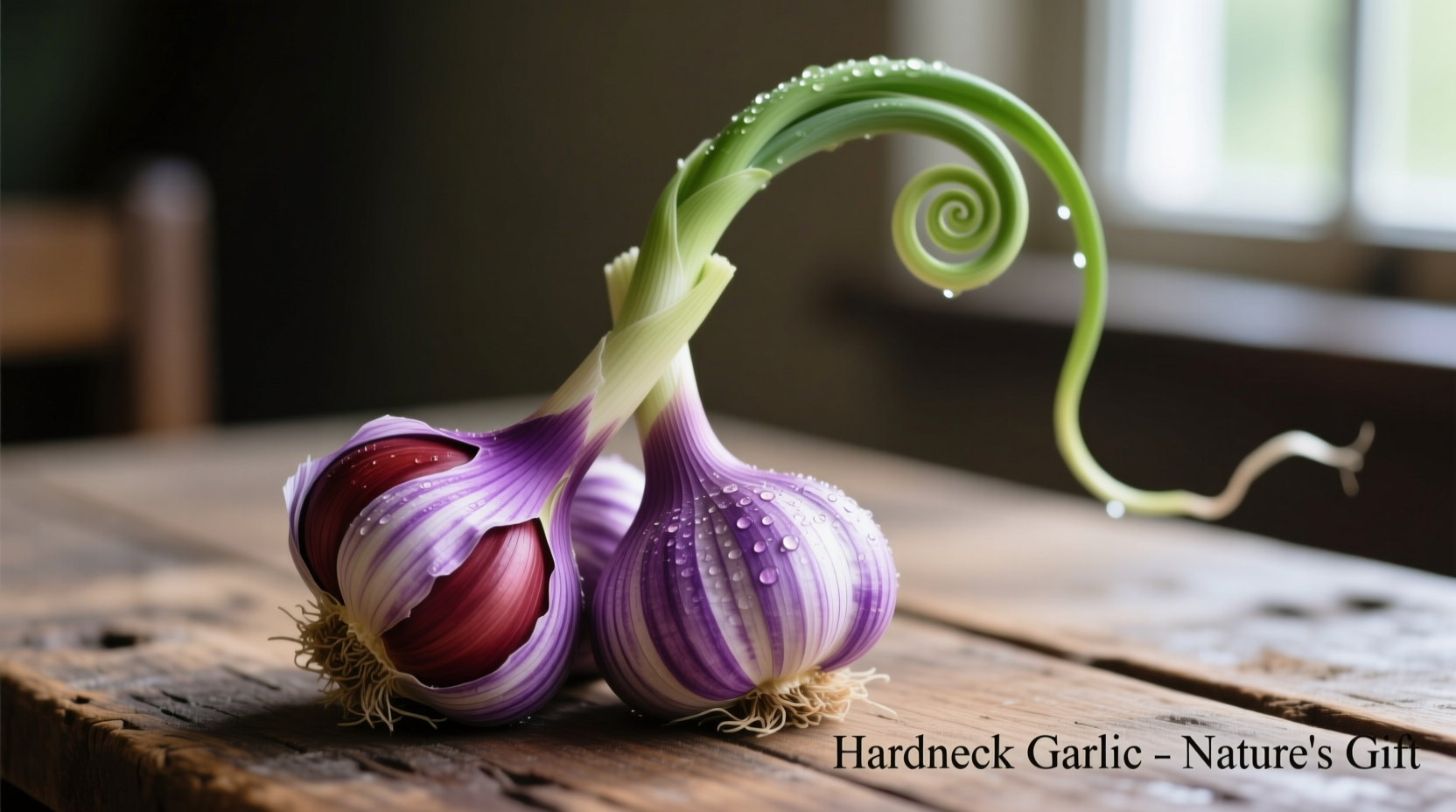Discover why chefs and gardeners consistently choose hardneck garlic for its rich, nuanced flavors and straightforward cultivation. This comprehensive guide reveals exactly what makes hardneck garlic special, when to plant and harvest it, how to maximize its culinary potential, and why it outperforms softneck varieties in both taste and ease of use despite its shorter shelf life.
What Sets Hardneck Garlic Apart
Hardneck garlic varieties develop a rigid central stalk that produces a distinctive curling flower stalk called a scape. This botanical feature creates several practical advantages for both growers and cooks:
- Easier peeling - Large, uniform cloves with minimal wrapper layers
- Superior flavor complexity - Richer, more nuanced taste profiles with less harsh aftertaste
- Distinct seasonal availability - Fresh scapes appear in late spring before bulb harvest
- Cold hardiness - Requires vernalization (exposure to cold) for proper bulb development
Unlike softneck varieties that dominate supermarket shelves, hardneck garlic represents the original cultivated form of garlic with genetic roots tracing back to Central Asia. Its distinctive growth pattern makes it particularly well-suited for home gardeners in temperate climates.

Hardneck vs Softneck: Key Differences at a Glance
| Characteristic | Hardneck Garlic | Softneck Garlic |
|---|---|---|
| Central Stalk | Woody, rigid flower stalk (scape) | Flexible, leafy stalks |
| Clove Arrangement | Single ring of 4-12 large cloves | Multiple layers of smaller cloves |
| Storage Life | 4-8 months | 9-12 months |
| Cold Requirement | Requires 40+ days below 40°F (4°C) | Minimal cold requirement |
| Peeling Difficulty | Very easy | More difficult |
Your Complete Hardneck Garlic Growing Timeline
Successful hardneck garlic cultivation follows a precise seasonal rhythm that aligns with natural temperature cycles. This timeline reflects research from the Oregon State University Extension Service based on decades of field trials across multiple climate zones:
- September-October: Plant cloves pointy-end up, 2-3 inches deep, 6 inches apart
- November-January: Root development during cold period (critical for bulb formation)
- March-April: Emergence of distinctive scapes (remove for larger bulbs)
- May-June: Bulb formation accelerates with longer daylight hours
- June-July: Harvest when lower third of leaves turn brown
- July-August: Curing period (3-4 weeks in dry, ventilated space)
Skipping the required cold period results in poorly formed bulbs—a critical consideration for gardeners in warmer climates. The USDA Agricultural Research Service confirms that hardneck varieties need at least 40 days of temperatures below 40°F (4°C) to initiate proper bulb development.
Climate Considerations for Successful Growth
Hardneck garlic thrives in regions with distinct seasonal temperature changes but faces limitations in certain environments:
- Ideal conditions: Temperate zones with cold winters (USDA zones 3-7)
- Challenging conditions: Southern climates with mild winters (zones 8-10)
- Solution for warm climates: Refrigerate cloves for 4-6 weeks before planting
- Soil requirements: Well-draining soil with pH 6.0-7.5
Gardeners in warmer regions can successfully grow hardneck garlic by simulating winter conditions. The University of Florida IFAS Extension recommends chilling cloves in the refrigerator for 4-6 weeks before fall planting to compensate for insufficient natural cold exposure.
Harvesting and Curing for Maximum Flavor
Timing your hardneck garlic harvest correctly makes the difference between exceptional flavor and disappointing results. Watch for these visual indicators:
- Lower third of leaves turn brown while upper leaves remain green
- Soil around plants appears slightly pushed up from bulb growth
- Individual cloves fill the wrapper skin without separating
After harvesting, proper curing transforms your garlic from field-fresh to kitchen-ready. Spread bulbs in a single layer in a dark, well-ventilated area with 60-70% humidity for 3-4 weeks. This process concentrates flavors and prepares cloves for storage. Never wash garlic before curing—moisture promotes mold development during the drying process.
Culinary Applications That Showcase Hardneck's Superior Flavor
Chefs prize hardneck garlic for its complex flavor profile that ranges from nutty and sweet when roasted to robust and spicy when raw. Its culinary advantages include:
- Raw applications: More balanced flavor with less harsh aftertaste
- Roasting: Develops deep caramelized notes without bitterness
- Scapes: Tender, garlic-flavored shoots perfect for pesto or stir-fries
- Preserving: Maintains flavor integrity when fermented or pickled
When substituting hardneck for softneck in recipes, use 25% less hardneck garlic due to its more intense flavor. The distinctive flavor compounds in hardneck varieties—particularly allicin and ajoene—break down more gracefully during cooking, creating more complex flavor development than softneck alternatives.
Storage Solutions for Optimal Shelf Life
While hardneck garlic doesn't store as long as softneck varieties, proper storage techniques can maximize its 4-8 month shelf life:
- Maintain temperatures between 55-65°F (13-18°C)
- Keep humidity around 60-70% (too dry causes shriveling, too moist causes sprouting)
- Store in mesh bags or open baskets for air circulation
- Avoid refrigeration, which triggers premature sprouting
Refrigeration creates conditions that encourage sprouting in hardneck garlic. The University of Minnesota Extension confirms that hardneck varieties stored at room temperature (60-65°F) maintain quality for 4-6 months, while refrigeration reduces this window to just 2-3 months due to increased sprouting.
Troubleshooting Common Hardneck Garlic Challenges
Even experienced gardeners encounter issues with hardneck garlic. Here's how to address the most frequent problems:
- Small bulbs: Usually indicates insufficient cold exposure or late planting
- No scapes: May signal improper variety selection for your climate zone
- Mold during storage: Results from inadequate curing or excessive humidity
- Early sprouting: Caused by temperature fluctuations or improper storage conditions
When scapes fail to develop, check your variety selection—some hardneck types like Porcelain produce more prominent scapes than others. The absence of scapes often indicates your garlic didn't receive sufficient cold exposure during winter months, preventing proper floral initiation.











 浙公网安备
33010002000092号
浙公网安备
33010002000092号 浙B2-20120091-4
浙B2-20120091-4